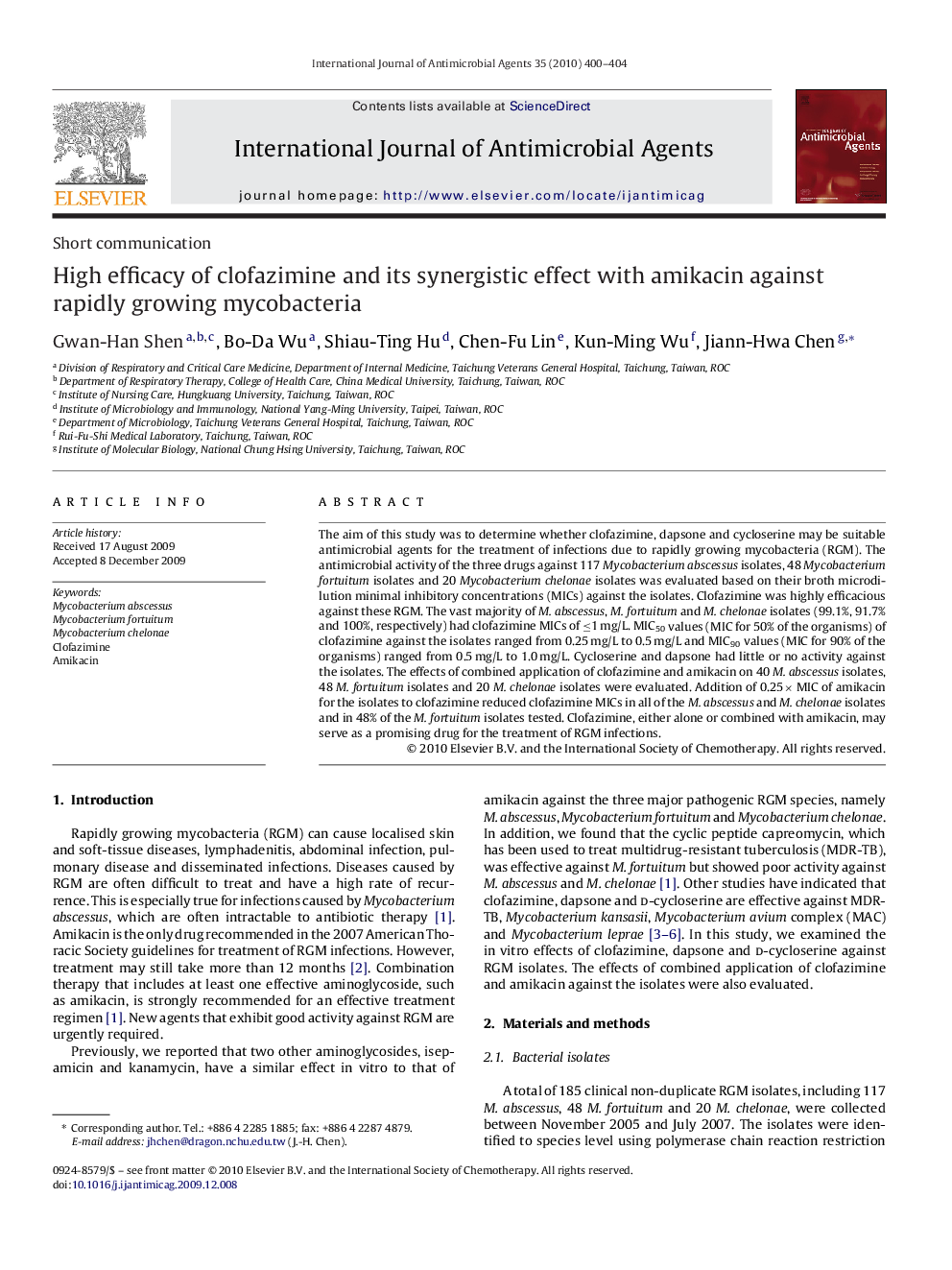| Article ID | Journal | Published Year | Pages | File Type |
|---|---|---|---|---|
| 3359616 | International Journal of Antimicrobial Agents | 2010 | 5 Pages |
The aim of this study was to determine whether clofazimine, dapsone and cycloserine may be suitable antimicrobial agents for the treatment of infections due to rapidly growing mycobacteria (RGM). The antimicrobial activity of the three drugs against 117 Mycobacterium abscessus isolates, 48 Mycobacterium fortuitum isolates and 20 Mycobacterium chelonae isolates was evaluated based on their broth microdilution minimal inhibitory concentrations (MICs) against the isolates. Clofazimine was highly efficacious against these RGM. The vast majority of M. abscessus, M. fortuitum and M. chelonae isolates (99.1%, 91.7% and 100%, respectively) had clofazimine MICs of ≤1 mg/L. MIC50 values (MIC for 50% of the organisms) of clofazimine against the isolates ranged from 0.25 mg/L to 0.5 mg/L and MIC90 values (MIC for 90% of the organisms) ranged from 0.5 mg/L to 1.0 mg/L. Cycloserine and dapsone had little or no activity against the isolates. The effects of combined application of clofazimine and amikacin on 40 M. abscessus isolates, 48 M. fortuitum isolates and 20 M. chelonae isolates were evaluated. Addition of 0.25× MIC of amikacin for the isolates to clofazimine reduced clofazimine MICs in all of the M. abscessus and M. chelonae isolates and in 48% of the M. fortuitum isolates tested. Clofazimine, either alone or combined with amikacin, may serve as a promising drug for the treatment of RGM infections.
